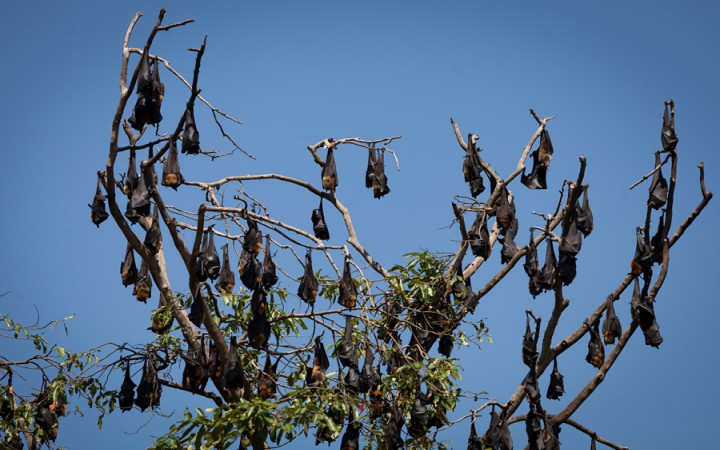Today’s Wonder of the Day was inspired by Noah. Noah Wonders, “Why do bats sleep upside down at night?” Thanks for WONDERing with us, Noah!
When the rest of the world is going to bed, bats are just waking up. They spend the night swooping through the air, gobbling up insects, plants, and small animals. When the sun comes up, they head home to spend the day hanging around.
Bats are happy to sleep upside-down in a variety of places. The movies portray bats as cave dwellers, but you'll find them hanging out upside-down everywhere from attics to bridges to the insides of hollow trees.
Bats roost, or perch, upside-down for several reasons. Unlike birds, bats cannot launch their bodies into the air from the ground, because their wings don't produce enough lift to take off like a helicopter.
A running start would help, but bats' hind legs are too tiny to gain enough speed for lift-off. This leaves bats with no choice but to use their claws to climb to a high spot, let go and fall into flight. If sleeping bats need to escape quickly, hanging upside-down means they are already in the perfect position to spread their wings and fly away.
Hanging upside-down is a great way for bats to hide from predators and danger, too. Since most of the animals that pose a threat to bats (such as humans and birds of prey) are awake while bats are sleeping, bats need a safe place to rest when it is time to get some sleep.
By hanging out where few animals would think to look — and most can't reach anyway — bats can enjoy a safe snooze. You might think bats would have competition from birds and other flying creatures, but the places where bats roost are not typically areas where it would be possible for birds to build a nest.
Try to remember the last time you hung upside-down from the monkey bars. Within a few minutes, you probably felt all the blood rush to your head and had to get down. Imagine spending the entire night that way! Welcome to a bat's life.
Bats have developed a special adaptation that makes sleeping upside-down as easy and effortless as sleeping in a bed is for humans. If you clench your fist around a baseball, your body uses muscles and tendons in your fingers, arms, wrists and hand. As the muscles in your arms contract, they pull on tendons, closing your fingers around the ball.
Bats' talons work in a similar way. When bats are ready to call it a night, they simply find a surface to grasp, fly into position, and let their bodies relax. Unlike human tendons, which are connected to muscle, bats' tendons are connected directly to their upper bodies.
When bats relax, the weight of their upper bodies pulls down on the tendons connected to the talons and they clench closed. The weight of the bats keeps their talons closed, and the talon joint locks them into position. This system is so effective that, if bats die while roosting, they will continue to hang upside-down until something (or someone) shakes them loose.




